14 Granite Cutting Tools for Cleaner & Faster Cuts
Author: Chris Miller | Editor: Omar Alonso
Review & Research: Jen Worst & Chris Miller

Given how beautiful, strong, and durable it is, it’s no surprise that granite can cost you quite a pretty penny, and even more for the granite cutting tools you'll need. Even so, it’s quite a popular option for flooring, countertops, columns, and various other purposes in both office and home settings.
So if there ever is a point when you want to cut through some granite (either for removing or remodeling), you’re going to have to be quite careful and precise so that you don’t spend more on replacement. You could get a professional to do the job, but that’s only going to worsen the financial stress.
14 Granite Cutting Tools
Instead, using the right tools will help you cut through this hard rock as smoothly and precisely as a hot knife through butter! Here’s a list of granite cutting tools that can help you get the job done and save money, while you’re at it.
Diamond Profile Wheels
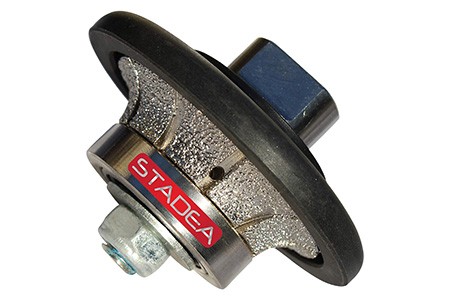
Did we just say diamond? Yes, we did! Given how hard granite is, you need a harder material to cut through it. With a 10/10 rating on the Mohs mineral hardness scale, there could be few other materials as suited to the job as diamonds.
Even though the diamonds used to make these tools are lab-made synthetic or industrial-grade diamonds, they have the same hardness and toughness that naturally occurring diamonds do.
Diamond profile wheels are the tools for the job if you want to shape granite or create profiles (such as bullnose, bevel, and ogee) on it, such as when installing any types of granite countertops or tiles, to ensure a perfect fit. Diamond profile wheels can efficiently grind down the corners and also polish the granite to bring out its best shine.
Using diamond profile wheels is also pretty straightforward; you just need a base like a variable speed polisher to which you can attach the wheels and use them. Diamond profile wheels come in a range of grits and sizes, so you can pick out one that’s most apt for your needs.
Diamond Masonry Blades
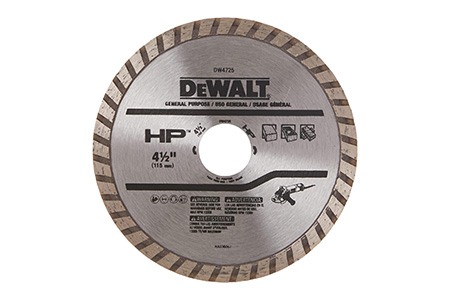
These blades are probably the best blade for cutting granite, as well as a range of other hard and soft substances such as concrete, plastic, brick, wood, and stone. You won't find any better granite cutter.
Diamond masonry blades are made from a combination of steel, carbide, and diamond, and come in an array of sizes that can be utilized in table-mounted and handheld saws. However you use them, the result is precise cuts in the granite, whether dry cuts or wet.
Tile Saw
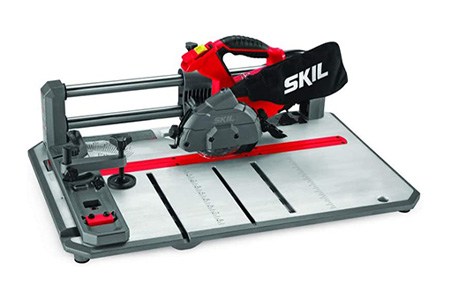
If you’re working with granite tiles, tile saws are super helpful. These types of saws have pivoting, adjustable heads, which means that you can make several kinds of cuts with these, including bevel cuts.
You can also easily attach diamond blades (you generally have to buy these separately) onto these saws quite easily to convert them into stone cutting tools, and you can then use them for both dry cuts and wet cuts.
However, not all saws can make both types of cuts, so check out the specifications before you invest in a tile saw or any other tile removal tools. Some are engineered only for wet cuts and shouldn’t be used otherwise.
Diamond Grinding Cup Wheels
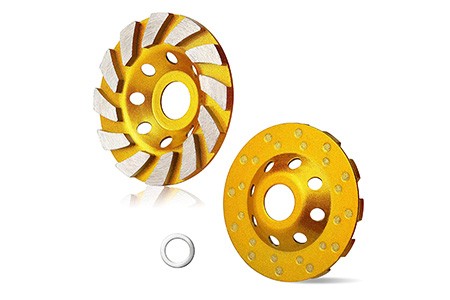
Diamond grinding cup wheels come in different sizes and types, with a function similar to the aforementioned profile wheels. The only major difference between the two is that grinding cup wheels are preferred for smoothing the surface in the project’s last stages and shaping it.
Generally, folks use both in conjunction, utilizing the profile wheels to shape the granite and following that up with the grinding cup wheels for any final touches. You can use grinding cup wheels in the same saw that you would use for a profile wheel.
When picking out a grinding cup wheel, bear in mind that the larger the wheel’s diameter, the more powerful the wheel. Additionally, you may encounter two types of diamond grinding cup wheels—those featuring a continuous rim and those that are segmented.
The former is more effective for cutting through thinner materials while the latter is more effective for thicker, more solid materials, which is what you need in your granite cutting tools.
Angle Grinder
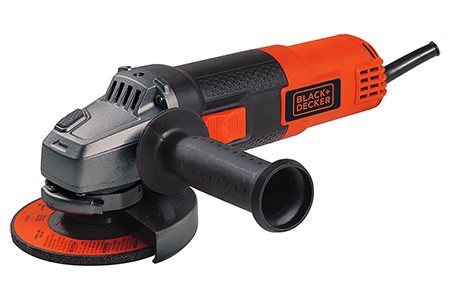
Angle grinders are handheld power types of tools that are typically used for grinding the granite slab’s edges, necessary when you’re installing sinks or countertops. These implements have rotating blades that can cut, polish, and grind the granite, so they’re quite a multipurpose tool.
Some angle grinders come with grinding wheels and diamond blades, increasing their utility as tools for granite cutting. If you buy one of these, there’s not much else you need to buy for your granite-cutting project. If you do need a different type of grinding wheel, here's some solid guidance on how to choose one for your specific task.
These grinders, though quite durable, are also quite light, so they’re not too taxing to use or hold over long periods. They also come in different speeds and sizes. In addition to diamond blades, you can also affix different blades to angle grinders, such as abrasive discs.
Circular Saw
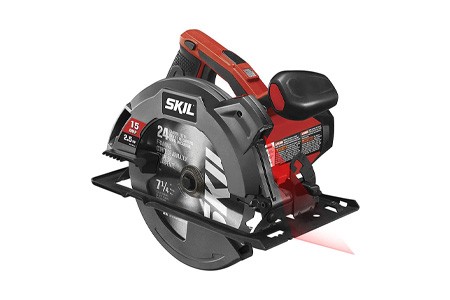
Extremely functional, circular saws can smoothly cut through granite when used with the right blade—generally, a diamond saw blade which converts these into a granite cutting saw.
Circular saws are especially good for making quick cuts to the medium, both bevel and straight cuts, letting you easily and accurately control the cutting and its depth.
Some saws have additional features like attached dust blowers that make the job easier by blowing away any unnecessary dust that could otherwise obstruct your vision and lead to mistakes.
Circular saws are also quite portable and straightforward to use. Even if not granite, you can use them to cut through materials such as plastic, wood, and metal, and make a range of different cuts, such as curves, circles, and straight cuts.
When buying a circular saw with a blade, remember that the greater the blade’s diameter, the deeper it can cut.
Miter Saw
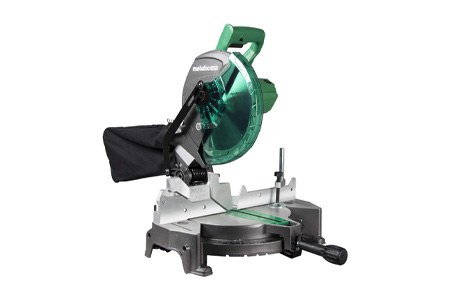
These versatile saws can make quick, precise, successive cuts in various angles on a range of materials, while also being good for trimming window and door casings, crown molding, and cutting baseboards.
Miter saws can be of the standard or compound variety. The former is capable of only miter cuts, while the latter can make both bevel and miter cuts. Additionally, you’ll also find electricity-powered miter saws and compressed-air-powered miter saws.
There is a bit of a learning curve with a miter saws in general and even more as a tool for cutting granite, but once you get the hang of it, you’ll be cutting through granite like a pro.
Miter saws are durable, portable, and powerful, and generally preferred over table saws as granite cutting tools, especially when used with the right saw blade.
Table Saw
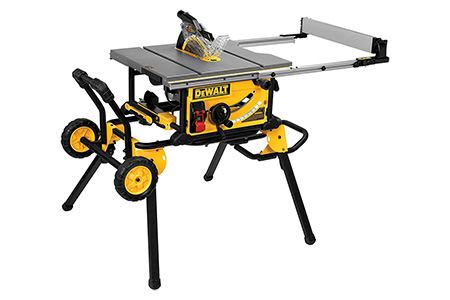
A table saw with a good diamond blade will go a long way in precisely cutting lots of granite in short periods. These saws are preferred in large projects and professional scenarios, as they’re easy to set up and run.
Using table saws as types of granite cutting tools requires rollers on your table saw's table as well as reinforced wings and enough man-power to lift and maneuver the large slabs of granite. You'll find these setups in professional settings but they aren't really appropriate for at-home use for this application.
Diamond Circular Saw Blades
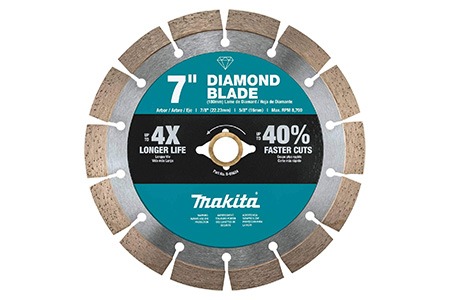
Circular saw blades are a favorite in large granite-cutting projects, as well as for cutting through other dense mediums like marble, faux marble, ceramic, and porcelain. These blades are typically meant for wet cuts, though you may find blades engineered for dry cuts too.
When picking out a diamond circular saw blade, always look for one with high percentages of diamond in the build, so that you have a durable and more efficient saw. For smaller projects, a carbide-tipped blade may be helpful. These blades also come in a range of sizes, so pick out one that matches your saw.
Diamond Drill Bits
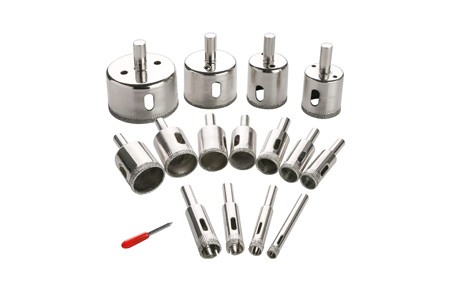
Drill bits help you drill holes through granite, making it easier to lift the slab with the help of tools. There are drill bits in varying sizes, and you’ll need to pick one based on the size of the hole you want to make as well as the drill you’ll be attaching the bit to. Most times, you can just pick up a set of differently sized bits.
The tips of these bits are made of diamond, with a steel body. Since the tip can get extremely hot from drilling, most drills have a water cooling system.
To use your drill bit, you’ll need an efficient power drill. You can opt for a corded or non-corded version—both have their own pros and cons. These are granite cutting tool types but I'd think of them more for simply boring holes than cutting at any length.
Power Drill
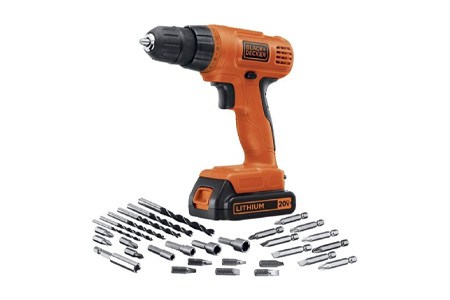
Of course, what use is a diamond drill bit if you don't have a power drill for it to be seated into? We talked about the benefits of these specific drill bit types, but not the drill itself. These types of drills will have enough strength to zip right through granite, whether you're trying to create a hole to set dowel rods in or to create holes to attach hardware with screws and bolts.
Diamond Contour Blades
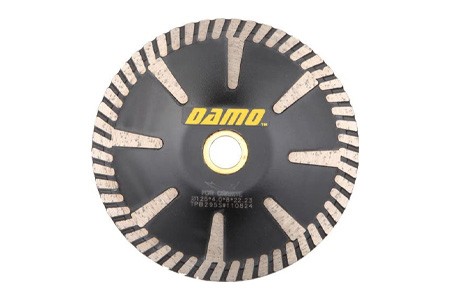
Diamond contour blades, as the name suggests, are used for cutting curves and contours into the granite surface in projects such as installing sinks, backsplashes, and countertops. These blades can easily sit on any saw and you can even cut out a circle with these blades.
Like drill bits, these granite cutting tools also have diamond-tipped edges to easily cut through thick mediums. You can find these in a variety of thicknesses and sizes. Wet cutting is recommended with a contour blade to reduce cracking, overheating, and excess dust.
Variable Speed Grinder / Polisher
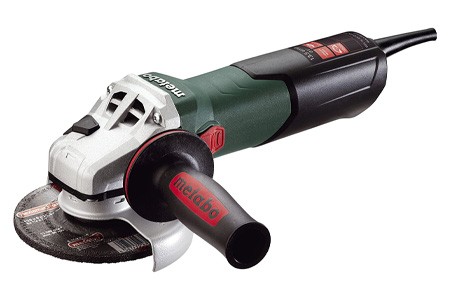
Like diamond grinding cup wheels, variable speed grinders/polishers come into play during the project’s finishing stages. These instruments are used to grind and polish granite, most commonly countertops.
Quite easy to use, you can use these for both dry and wet stone grinding and polishing. For better control, these implements generally have variable speed settings that you can use based on your needs and convenience. Some even have adjustable handles for easy maneuvering.
Safety Equipment
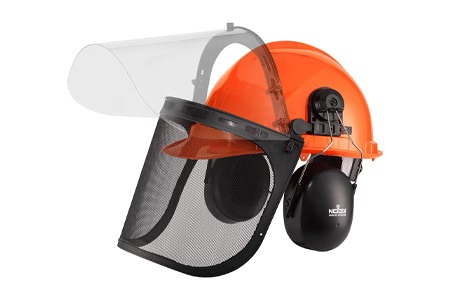
I mention safety gear because these precautions should never be overlooked. For something as simple as painting granite countertops, let alone cutting granite slabs, you should always but safety first.
When cutting and grinding anything, you need to be wearing eye protection in the form of large goggles. You'll want ear protection, whether those are ear muffs or ear plugs.
And since you'll be generating dust, a dust mask is a must as well. It's your choice if you want to use gloves, knee pads, and items of that sort, but the rest are non-negotiable.
Granite Cutting Tool Types for an Easier Job
When dealing with granite cutting tools, you’re going to face a lot of dust and flying particles, especially with dry cutting. Therefore, safety goggles, work gloves, and dust masks are a must to protect yourself while using any of the above tools.



